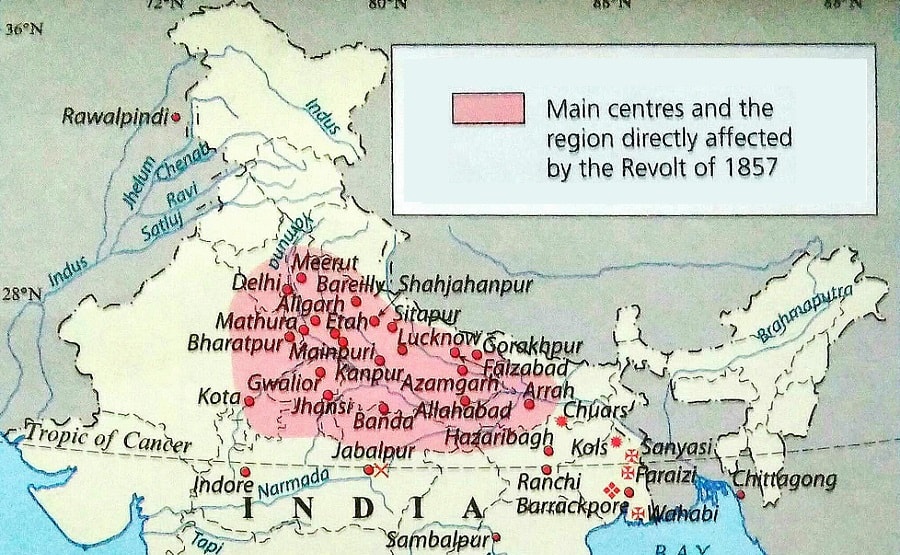Q. The revolt of 1857 is also called the Sepoy Mutiny. Considering this statement discuss the reasons for the revolt of 1857 as well as its failure. (150 Words)
Introduction
The revolt of 1857 was the first organized expression of Indians to the British East India Company.
It began as a revolt of the British East India Company’s army sepoys, but it eventually gained the support of the masses.
Causes of the Revolt
- Political Cause: The British policy of expansion through the Doctrine of Lapse and direct annexation were the political causes of the revolt. Numerous Indian kings and chiefs were overthrown, which caused other ruling families to fear they would suffer a similar fate.
- Social and Religious Cause: The rapid spread of Western Civilization in India raised alarming concerns all over the country. For example, the legalization of widow remarriage and the abolition of practices such as sati and female infanticide were viewed as threats to the established social structure.
- Introducing western methods of education directly challenged Hindu and Muslim orthodoxy.
- Even the development of the railways and telegraph was viewed with suspicion.
- Economic Cause: The Company’s high land taxes and strict revenue collection practices infuriated peasants and zamindars in rural areas.
- Military Causes: The Revolt of 1857 began with a sepoy mutiny. Although Indian sepoys made up more than 87% of British troops in India, they were regarded as inferior to British soldiers. A European sepoy of the same rank was paid more than an Indian sepoy.
- Immediate Cause: A rumor spread that the new Enfield rifle cartridges were greased with cow and pig fat. The sepoys had to bite off the paper on the cartridges before loading these rifles. Both Hindu and Muslim sepoys refused to use them.
Reasons for the Failure of the Revolt
- Limited uprising: Although the revolt was fairly widespread, it had little impact on most of the nation. The revolt was mostly confined to the Doab region. The large princely states of Hyderabad, Mysore, Travancore, and Kashmir, as well as Rajputana’s smaller states, did not participate in the rebellion.
- No effective leadership: There were no effective leaders among the rebels. Although Nana Saheb, Tantia Tope, and Rani Lakshmi Bai were courageous leaders, they were unable to provide effective leadership to the entire movement.
- Limited resources: The rebels were short on both men and money. On the other hand, the English were consistently supplied with men, money, and weapons in India.
- No participation of the middle class: The English educated middle class, rich merchants, traders, and zamindars of Bengal aided the British in suppressing the revolt.
Conclusion
The revolt of 1857 was unprecedented in the history of British rule in India. It brought many segments of Indian society together for a common cause, albeit in a limited way. Despite the fact that the revolt did not achieve its intended goal, it did sow the seeds of Indian nationalism.

Other articles:
Did the Government of India Act, 1935 lay down a federal constitution?
What is a quasi-judicial body? Explain with the help of examples.
INDIA AT 75 : HOW WAS AUGUST 15TH CHOSEN AS INDIA’S INDEPENDENCE DAY ?

